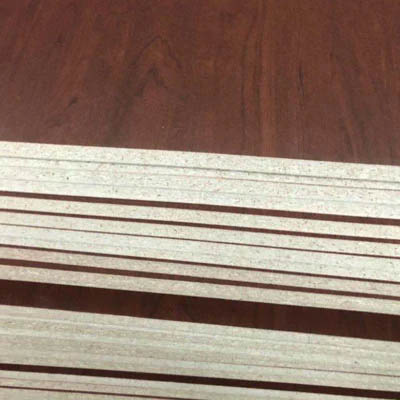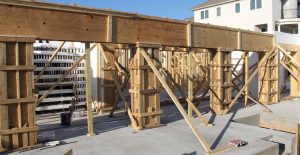At this stage, the price competition in the particleboard product sales market is relatively fierce, and the prices of different grades of products vary greatly. In the particleboard production process, some factors will affect the production process state. In the process of controlling and adjusting the production process, the process state should always be ensured to be stable, and adjustments can be made in time when changes occur to continuously reduce energy consumption and production loss.

1. Current status of particleboard production in my country
1.1 Low output
In recent years, the number of particleboard projects in our country has shown a rapid increase trend. From the overall situation, domestic equipment has gradually improved, and the technical level has moved closer to imported equipment to a certain extent. In the 1990s, most imported production lines were in good condition, but domestic particleboard production lines had many problems. There are also unreasonable phenomena in the equipment matching of some production lines, such as small material preparation capacity and large hot pressing forming capacity. For the 12-layer press particleboard production line, if the material preparation is sufficient and the process adjustment is reasonable, the production capacity will also increase. However, the actual situation is exactly the opposite. Due to insufficient drying and supply of particles, this situation is more common in the backing board production line. This is also the main reason for low production capacity.
1.2 High consumption
1.2.1 High glue consumption
In the early stage, a large part of the production lines do not consider raw materials at all. For example, if the production line uses industrial shavings and sawdust as raw materials, most of them choose a multi-layer press. A pre-press needs to be provided in the production line because after paving, Pre-pressing is required. The main disadvantage of using this type of raw material is that pre-pressing is difficult to form, consumes a lot of glue, and also increases costs. The production line using this kind of raw material should preferably adopt a multi-layer press with a backing plate or a single-layer press. You can skip pre-pressing and go directly to press production.
1.2.2 High power consumption
There are a large number of air supply and dust removal equipment in the production line. Since these equipment are too large during process selection, the operating costs are high. Some companies immediately modified their equipment after realizing the problem, while others did not know how to solve the problem of excessive power consumption. High power consumption can easily increase dust emissions, ultimately causing environmental pollution.
2 Process control of wood shavings preparation process
In the particleboard production process, the requirements for the shape of the shavings are very strict. Coarse shavings will affect the final drying effect and the fine material output of the grinder; if the shavings are too small, the amount of sizing of the shavings will increase, and the board will also increase. Density, resulting in a waste of wood and adhesive, and too fine shavings are also extremely detrimental to the elimination of moisture during the hot pressing process, and it is easy to “fire”. This problem is more prominent for fruit wood raw materials. Proper adjustment and replacement of the chipper ring and impeller is key to ensuring good shaving shape. An important factor in ensuring the shape of the shavings is the reach of the shaving knife, which should be controlled between 0.6~0.8mm. If the flaking machine is running for a long time, the wear-resistant backing plate of the knife ring will wear out, causing the knife reach to change, and it needs to be readjusted. If the raw materials are trees and fruit wood, it is extremely difficult to process the residue of rotary-cut tree veneers and fruit wood. The residue of rotary-cut tree veneers can easily block the gap between the knife doors and easily cause bridges in the silo, making it difficult to control. The cutting amount; the degree of wear of the wear-resistant backing plate when processing fruit wood will also increase. If the tool wear is serious, the tool reach and the knife door clearance will change. After adjusting the tool installation position, the severely worn wear-resistant backing plate must be replaced to always ensure that the inner ring surface of the knife ring is on the same circumference. on, and then adjust the knife installation position to ensure that the knife extension is consistent. In order to avoid clogging of the knife door gap, the remaining veneer from rotary cut trees can be fed with fruit wood in a ratio of 1:1, which not only solves the problem of tool wear, but also avoids clogging of the knife door gap. In order to ensure the shape of the shavings, the shaving knife should be kept sharp. Once the blade is found to be dull or chipped, it should be replaced or polished in time. In addition, the bed knife of the chipper impeller will also affect the shape of the shavings. After the bottom knife is worn, its top will become rounded and lose its blunt edge, which will increase the gap between the outer diameter of the impeller and the inner diameter of the knife ring. The cutting state of the wood chips will also change. At this time, the longitudinal edge of the bottom knife should be polished. Make sure it is square and then reinstall and adjust. If the gap still does not meet the requirements after grinding, the entire bedknife can be replaced.
3. Analysis of particle board production technology
3.1 Drying technology
Drying technology includes the selection of drying media and drying processes. A necessary step in the particleboard production process is particle drying, and the resulting energy costs are essential. As a particle production process, how to effectively improve particle drying technology and minimize production costs is the main problem faced by particle drying in the particleboard industry. Under normal circumstances, the factors that affect the drying degree of wood shavings mainly include airflow temperature, speed, moisture content of the wood shavings themselves, loading capacity and drum, etc. Combined with the current wood shavings technology, the airflow temperature will increase the drying rate of wood shavings during the rising process. , and it will also increase unit energy consumption. The initial moisture content and loading capacity of wood shavings will also increase the unit energy consumption in the process of increasing, so it is very difficult to combine these two aspects to change the production process. At present, in the process of transforming the wood shavings drying energy-saving process, the air flow speed and the roller are mainly combined. The air flow speed will increase the wood shavings drying rate during the rising process, reducing the unit energy consumption in the shortest time while also increasing the final moisture content. Certain requirements were met. In addition, the movement of the drum will also affect the drying of the shavings. By preventing the rotation of the drum, the drying rate of the shavings can be increased and the cost can be reduced at the same time.
3.2 Gluing energy saving
Gluing energy-saving technology also plays a vital role in the particleboard production process. As the main raw material for sizing, adhesive plays an important role in the particleboard production process. The quality of the particleboard produced is affected by the type and amount of glue applied, and it also affects the production cost. How to choose a scientific and reasonable sizing method and what type of adhesive are of great significance to the production of particleboard. Currently, the most widely used method in the production process of particleboard in my country is the method of applying curing agent alone. This method can not only reduce the consumption of glue, but also avoid waste and effectively reduce production costs. In addition, online sizing technology is also commonly used in the production process of particleboards. It mainly mixes water, waterproofing agent solution and surface core layer glue according to a certain proportion, and then puts them into a particleboard mixer. The main advantage of using this method is that it can be used conveniently and flexibly in the production line, and it can also effectively reduce the consumption of adhesive, which is beneficial to environmental protection.
3.3 Scrap recycling
Doing a good job in recycling particle board waste can avoid waste and reduce production costs. In the particleboard production process, waste will be generated regardless of cutting or edge-to-edge segmentation. Most of these wastes do not have any quality problems, so recycling and reusing waste can effectively reduce the demand for raw materials in the particleboard production process. Not only does it reduce the waste of raw materials, but it also significantly reduces production costs. Exhaust gas particle board as fuel can also solve the demand for raw materials in the drying process. If waste materials are not used rationally, environmental pollution will be aggravated. Therefore, doing a good job in recycling waste materials is one of the important links in energy saving and consumption reduction in particleboard production. In the process of waste recycling, the following aspects should be carried out: First, the fertilizers and wood processing residues in the particleboard production process should be used as fuel to minimize the use of electricity, coal, etc.; in the particleboard production process China should do a good job in control according to the energy consumption standards stipulated by the state, reduce energy consumption to the maximum extent, make full use of waste materials generated in each link, and continuously reduce production costs; waste recycling should be included in rewards and punishments as soon as possible. It is also necessary to increase efforts to publicize waste recycling and enhance people’s awareness of energy conservation; use scientific and reasonable methods to enhance the energy utilization efficiency of energy-saving transformation, minimize the energy consumption and scrap rate of unit products, and maximize the treatment of waste products. Make effective use of it and strive to do the best in energy conservation and consumption reduction.
4 .Conclusion
To sum up, it is necessary to control the particleboard production process well and stabilize the process status. Only in this way can production costs be reduced and the quality and output of particleboard be continuously improved. There are many aspects involved in the particleboard production process. In addition to strictly following the process regulations during the production process, we must also do a good job in inspecting, detecting and adjusting the process status.

